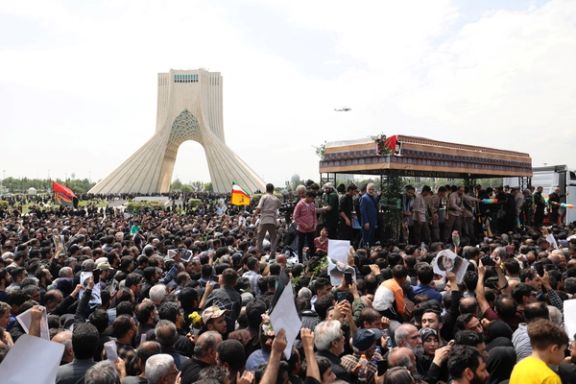The Economic Legacy of Iran’s Raisi; Facts and Figures

As citizens' living conditions continue to worsen, pro-government Iranian media have intensified their praise for the late President Ebrahim Raisi's "successes" following his death in a helicopter crash.
During Ebrahim Raisi's presidency, Iran's economic indicators indeed changed; some appear positive, but there are many caveats and uncertainties even within these positive figures.
A precise economic evaluation of Raisi's government is complicated due to a lack of transparency. However, a combination of various economic indicators provides a general picture of the situation.
One key indicator is the level of government budget realization.
Raisi's predecessor, Hassan Rouhani, had instructed the Central Bank to stop publishing state budget realization reports since 2018, citing the need to keep government information confidential due to US sanctions.
However, the Central Bank recently released details of the annual budgets for 2017-2020, revealing a 30% annual deficit. Despite this, the Central Bank continues to withhold reports on the state of budget realization during Raisi's administration.
Given the Central Bank’s reports indicating a doubling of state debts to the banking system during Raisi’s presidency, it appears that the government’s budget deficit level has been worsened.
People's livelihood
The statistics of the Food and Agriculture Organization of the United Nations, FAO, show that the consumption of red meat by Iranians declined to 732 thousand tons in 2023, 32% less than in 2020. Raisi assumed the presidency in August 2021.
Even official statistics show that the daily calorie intake per capita in Iran has declined by 22% to 2,100 calories since the 2010s, with the situation worsening year by year. This is a direct reflection of rising inflation, starting in 2018, when the United States withdrew from the JCPOA nuclear deal and imposed “maximum pressure” sanctions on Iran’s oil exports and international banking. Annual inflation soared to 40%, and by some accounts, it is around 50% in 2024.
The highest jump in prices occurred in the food sector, when in 2023, prices registered an increase of between 60-100% for essential food items compared to the previous year.
The pro-government media are attempting to present Raisi’s success by highlighting the 5% GDP growth in 2023, but the details of the Statistic Center’s report show that the only reason of last year’s relatively higher GDP growth was a 21.8% oil production increase and a 16.7% growth in state expenses expenditures (based on 2010 fixed prices).
None of the mentioned GDP drivers have had a positive effect on people's livelihoods, nor are they sustainable. First, the growth was insufficient in generating sufficient revenues for the government that had to continue printing money. Second
The International Monetary Fund has put Iran’s GDP growth at 4.7% for 2023, but predicted only 3.3% growth for 2024 and 3.1% growth for the following year.
Unemployment and inflation
Pro-government media also touts a decrease in the unemployment rate, from about 12% in 2020 to 8.1% in April 2024. However, detailed reports from the Statistical Center of Iran (SCI) reveal that this drop is primarily due to a decline in the number of unemployed individuals actively seeking work. In simple terms, the only reason for the decreasing unemployment rate is that about 3.5 million Iranians have become discouraged from seeking employment and have exited the labor force. Consequently, the labor force participation rate has declined from 44.5% to 41% in recent years, artificially pushing the unemployment rate down.
It should also be noted that the government considers one hour of work per week as employment and this leads to a much lower unemployment rate than the prevailing reality.
Regarding inflation, the statistics provided by Iran's own institutions are contradictory. While SCI reported last year's inflation rate at 41%, the Central Bank of Iran recently released a report calculating "payment of debt and dowry" based on a 52.3% inflation rate in 2023. This discrepancy suggests that Iran's actual inflation rate is significantly higher than what official figures indicate.